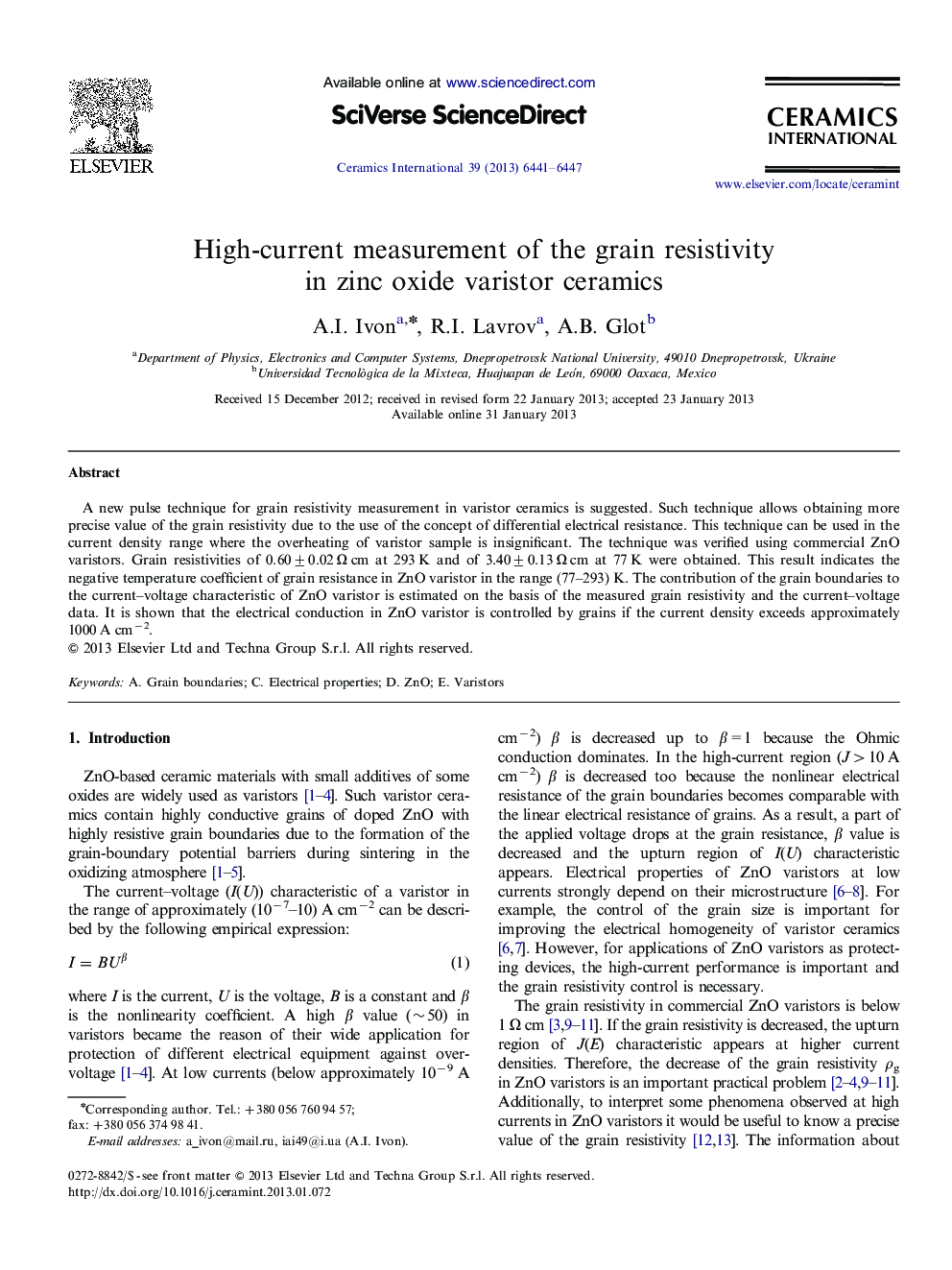| Article ID | Journal | Published Year | Pages | File Type |
|---|---|---|---|---|
| 1462770 | Ceramics International | 2013 | 7 Pages |
A new pulse technique for grain resistivity measurement in varistor ceramics is suggested. Such technique allows obtaining more precise value of the grain resistivity due to the use of the concept of differential electrical resistance. This technique can be used in the current density range where the overheating of varistor sample is insignificant. The technique was verified using commercial ZnO varistors. Grain resistivities of 0.60±0.02 Ω cm at 293 K and of 3.40±0.13 Ω cm at 77 K were obtained. This result indicates the negative temperature coefficient of grain resistance in ZnO varistor in the range (77–293) K. The contribution of the grain boundaries to the current–voltage characteristic of ZnO varistor is estimated on the basis of the measured grain resistivity and the current–voltage data. It is shown that the electrical conduction in ZnO varistor is controlled by grains if the current density exceeds approximately 1000 А сm−2.
